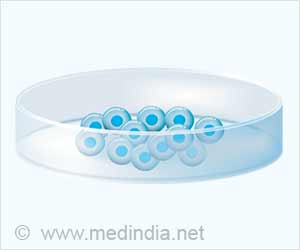In the EU or US there are currently no approved drugs for treating nonalcoholic steatohepatitis (NASH), most NASH therapies in development are primarily targeting patients with F2 (moderate fibrosis) or F3 (advanced fibrosis).
Among the 33 late-stage pipeline assets for NASH, only three are focused on decompensated cirrhosis (DC) due to NASH. An in-depth examination of the mechanisms of action (MOAs) of these agents highlights HepaStem, developed by Promethera Biosciences and Cellaion, as the most promising, according to GlobalData, a leading data and analytics company.
HepaStem’s Innovative Stem Cell Therapy for Nonalcoholic Steatohepatitis (NASH)
NASH, a severe form of nonalcoholic fatty liver disease (NAFLD), often goes undiagnosed for years due to its lack of initial symptoms. HepaStem is a stem cell therapy composed of liver-derived mesenchymal stem cells (MSC), which addresses various aspects of NASH disease progression. Administered intravenously without the need for immunosuppressants, HepaStem enters the liver through the bloodstream, targeting multiple disease pathways to reduce tissue fibrosis and promote liver function restoration by mitigating inflammation, deactivating stellate cells, and minimizing fibrosis.
Sravani Meka, Senior Immunology Analyst at GlobalData, comments: “While Phase IIb data for HepaStem and standard of care (SoC) in patients with acute-on-chronic liver failure (ACLF) remains limited, ongoing studies for treating other conditions like neurological disorders, cardiac ischemia, and diabetes have demonstrated the beneficial effects of MSC-based therapies. Hence, considering a stem cell therapy for DC due to NASH is not unexpected. However, gaining approval for HepaStem may pose challenges due to the lack of prior drug data in ACLF patients and potential long-term side effects such as tumor formation, immune reactions, and therapy failure. Additionally, distinguishing adverse events as NASH-related or treatment-related can be challenging in this high-morbidity and high-mortality patient segment.”
Albutein seems to be on track to become the first therapeutic approved for DC, with a projected US launch in Q1 2026. HepaStem is expected to enter the US market in Q1 2027, while BioVie’s BIV201 is anticipated to be marketed in Q4 2028.
Advertisement
Both Albutein and BIV201 are in development for treating ascites (excess abdominal fluid) resulting from persistent liver inflammation. While both appear beneficial for ascites due to DC, BIV01 may prove more effective by addressing the underlying cause of disease progression. Clinical research has shown that despite the widespread use of albumin infusions in cirrhosis patients to enhance renal function and alleviate ascites, the observed benefits are modest and limited to patients with slight renal impairment who respond to conventional therapy.
Sravani concludes: “However, BIV201 and Albutein may serve as viable options as bridge therapies, extending survival for NASH patients awaiting a liver transplant. Notably, as the NASH market continues to witness approvals for agents focusing on cirrhosis improvement and liver regeneration for patients in earlier NASH stages, the need for a treatment option for DC due to NASH is expected to decline as fewer patients progress to DC. Until that point, the performance and approval of HepaStem, BIV201, and Albutein remain to be seen.”
Source: Medindia



